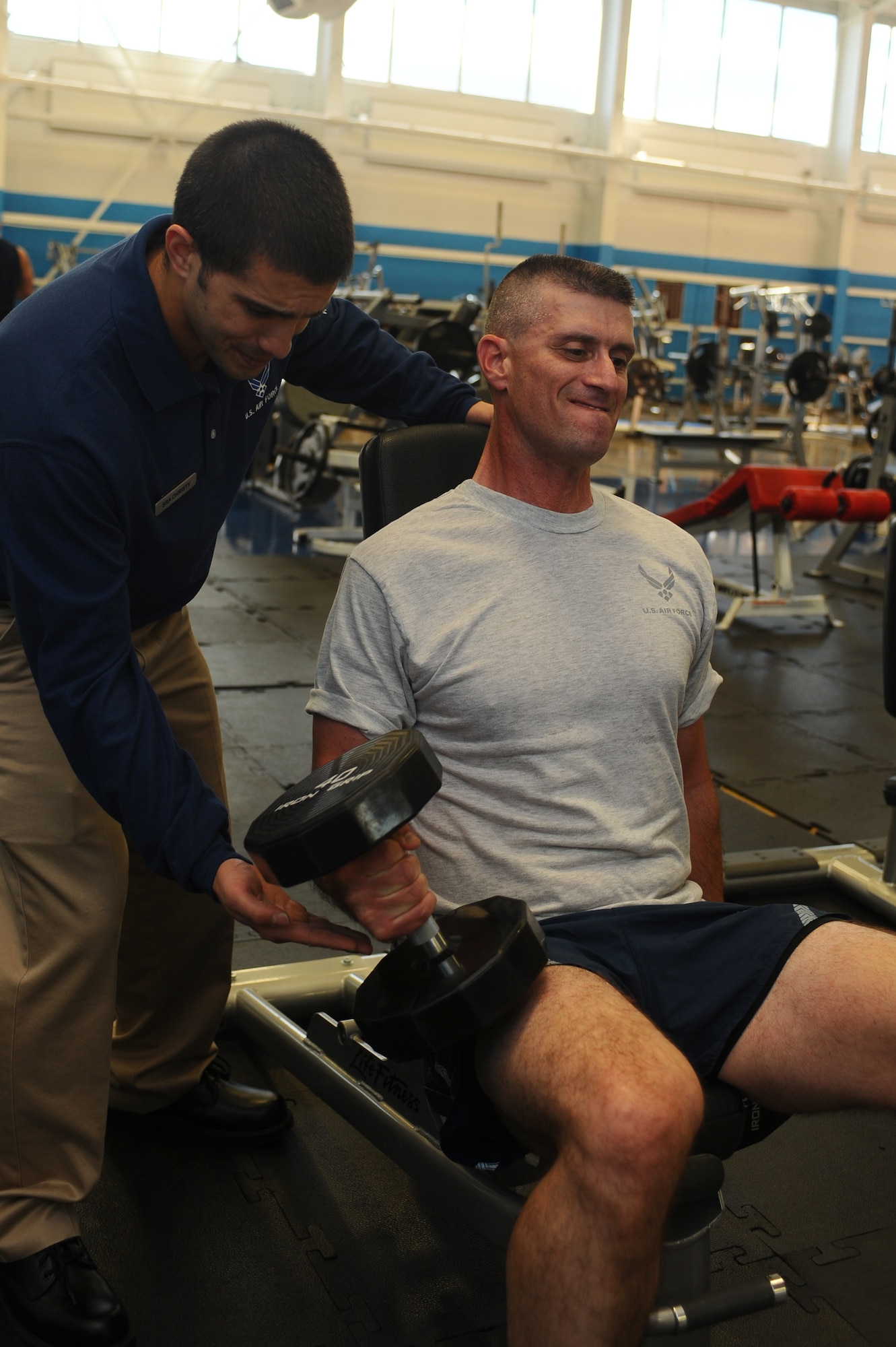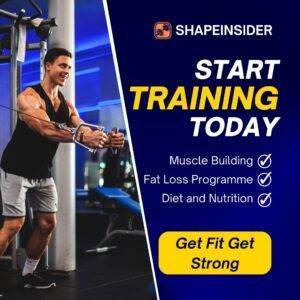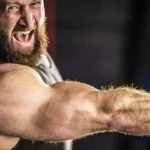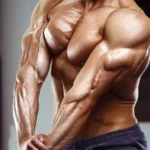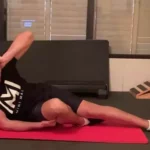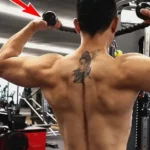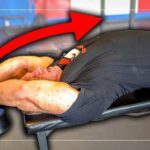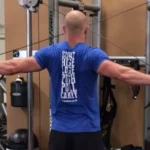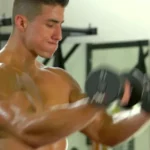The Standing Dumbbell Fly is an exercise that targets the chest muscles. In this strength training exercise hand and arm move through a particular arc with the elbow held at a constant angle.
Standing dumbbell fly exercise is a favorite move of fitness freaks to pump the pectoral. It is an isolation movement and usually, it is considered a perfect finisher of chest muscles.
Today in this article we will discuss, how to perform a standing dumbbell fly, its benefits, muscle work, safety, and many other variations. Ok enough talking, let’s jump into the main course!
How to Perform Standing Dumbbell Fly
Standing dumbbell exercise is a great isolated exercise to train your upper along with mid-chest. You just need a pair of medium-weighted dumbbells, you can make your pectoral muscles bigger, stronger, and well-shaped.
You can do this exercise as a warm-up exercise, the beginning of your chest workout routine. Also, it can be your best finisher and can create a little more microtears in the pectoral during this exercise.

- Start by holding a dumbbell in each hand, with your feet shoulder-width apart .
- Stand with your arms extended straight by side of you, with your palms facing each other.
- Slowly bring the dumbbells up, keeping your arms slightly bent , until they are at or below chest level with your both palm facing upward .
- Pause briefly at the bottom of the movement and then slowly bring the dumbbells back to the starting position.
- Repeat for the desired number of repetitions.
Our recommendation is to perform 3 to 4 sets of 12 to 15 repetitions , to put maximum resistance in your muscle, and create more hypertrophy into the muscle leading to help to grow your muscle faster.
Keep in Mind During Standing Dumbbell Fly
Weight training is a great way to strengthen your muscle and get into perfect shape. But many times some injuries and damages are happened due to heavy weight, wrong form or something else.
- Read these tips and precautions to avoid any type of injury during performing a standing DB fly.
- It’s better to start with a light weighted dumbbell and slowly you can increase the weight as you build strength.
- Start with some mobility exercises and warm-up exercises, instead of directly jumping into this exercise.
- Perform this exercise slowly and hold for at least 2 seconds, when the weights reach chest level.
- Start the movement with inhalation(breath in) and at end of the movement exhale(breath out).
- To create a little more hypertrophy in muscle fiber, slightly internally rotate your wrist at the top of the motion.
Read More:
- 7 Best Long Head Bicep Exercises for Massive Arms
- How to Do Cable Front Raise for Bigger Shoulder
- How to do Side Lying Bicep Curls for Bigger Arm
Muscle Worked in Standing Dumbbell Fly
The standing dumbbell fly is a great isolated movement for chest muscles, especially the upper and mid pectorals. There are many more muscles present that acts as a supportive muscle or act as a stabilizer of the shoulder girdle.

Prime Mover:
Pectoralis major(upper and mid)
Secondary Mover:
There are many muscles are present which are act as secondary movers or stabilizers while performing standing dumbbell fly. Names of some major muscles are given below.
- Anterior deltoid
- The short head of biceps brachii
- Brachialis
- Levator scapulae
- Latissimus dorsi(lats)
Benefits of Standing Dumbbell Fly
Low to high dumbbell fly provide a lot of benefits that are useful for athletes as well as normal human beings. Let’s take a look at these amazing benefits.
- Standing dumbbell fly allows you to move through a greater range of motion.
- For home workout protocol this exercise is a great option to train your chest.
- This exercise act as a chest opener and helps to reduce upper back pain, increase the range of motion of the shoulder joint and keep loosened upper body.
- For beginners, it’s a great choice to train chest muscles and for these people who experienced discomfort in their joints during the bench press.
- In dumbbell flying, exercise scapular retraction occurs which may help to improve posture and help to strengthen your shoulder region.
Standing Dumbbell Fly Alternatives
There are some other exercises are exist, which also help to build your pectoral muscles means help to grow your chest. If you perform an exercise for a long time, after some months, your muscle growth is stuck.
Otherwise, if you want to put maximum weight on muscle, and train each and every fiber then you have to try many alternative exercises. Best standing dumbbell fly alternatives are given below.
1. Dumbbell Chest Fly
The dumbbell chest fly is a similar type of exercise where the middle chest is mostly targeted along with the upper chest. To perform this exercise you need a flat bench and a pair of the medium-weight dumbbell. How to perform this exercise, take a look:

- Start by lying on a flat bench with a dumbbell in each hand, your feet flat on the floor.
- Hold the dumbbells straight up over your chest, with your palms facing each other.
- Slowly lower the dumbbells out to the sides, keeping your arms slightly bent, until they are at or below chest level.
- Pause briefly at the bottom of the movement and then slowly bring the dumbbells back to the starting position.
- Repeat for the desired number of repetitions.
Our recommendation is to perform 3 to 4 sets of 12 to 15 repetitions , to put maximum resistance in your muscle, and create more hypertrophy into the muscle leading, to help to grow your muscle faster.
2. Incline Bench Dumbbell Chest Fly
The incline bench exercise is a chest strengthening exercise where you put maximum weight on your upper chest. To perform this exercise you need an inclined bench and a pair of medium-weighted dumbbells. Take a look at the full instructions below:

- Start by lying on an incline bench with a dumbbell in each hand, your feet flat on the floor.
- Hold the dumbbells straight up over your chest, with your palms facing each other.
- Slowly lower the dumbbells out to the sides, keeping your arms slightly bent, until they are at or below chest level.
- Pause briefly at the bottom of the movement and then slowly bring the dumbbells back to the starting position.
- Repeat for the desired number of repetitions.
Our recommendation is to perform 3 to 4 sets of 12 to 15 repetitions , to put maximum resistance in your muscle, and create more hypertrophy into the muscle leading to help to grow your muscle faster.
3. Standing Chest Fly
A standing chest fly is a great option for a home chest workout. For that, you only need a resistance band and an S-shaped hook. It is a great exercise to create hypertrophy in chest muscles and grow your chest. See how to perform it:

- Stand with your feet hip-width apart and secure one end of the resistance band around a sturdy anchor point at chest height.
- Hold the other end of the Theraband in each hand, with your arms extended straight out in front of you and your palms facing each other.
- Keeping your arms slightly bent, slowly open your arms out to the sides, until they are at or below chest level.
- Pause briefly at the bottom of the movement and then slowly bring your arms back to the starting position.
- Repeat for the desired number of repetitions.
Our recommendation is to perform 3 to 4 sets of 12 to 15 repetitions , to put maximum resistance in your muscle, and create more hypertrophy into the muscle leading to help to grow your muscle faster.
Takeaway
Standing Dumbbell fly is can be a great exercise for you to grow your chest muscle and get a bigger chest. Make sure to keep your movements slow and controlled to avoid using momentum and engaging other muscle groups. Keep your shoulder blades squeezed together and avoid arching your back. If necessary, use a lighter weight to ensure proper form.
Frequently Asked Questions:
What muscles do standing flys work?
The Standing Dumbbell Fly is a weightlifting exercise that primarily targets the chest muscles including upper and middle pectoralis major.
Are standing dumbbell flys good?
Standing Dumbbell Flys can be a good exercise for targeting the chest muscles when performed correctly as part of a well-rounded fitness program.
How to do standing dumbbell fly?
To perform standing dumbbell fly
1. Start by holding a dumbbell in each hand, with your feet shoulder-width apart.
2. Stand with your arms extended straight by side of you, with your palms facing each other.
3. Slowly bring the dumbbells up, keeping your arms slightly bent, until they are at or below chest level with your both palm facing upward.
4. Pause briefly at the bottom of the movement and then slowly bring the dumbbells back to the starting position.
5. Repeat for the desired number of repetitions.
6. Our recommendation is 3-4 sets of 12-15 repetitions.
Are flys for chest or shoulders?
Chest flys primarily target the chest muscles, specifically the pectoralis major, which is the largest muscle in the chest. However, fly exercises, such as the dumbbell chest fly, can also work the shoulders, particularly the front and middle deltoids, to a certain extent.
Do flys build chest?
Yes, fly exercises, particularly chest flys, can help to build and strengthen the chest muscles. Chest flys target the chest muscles by challenging them through a full range of motion, helping to increase muscle activation, size, and strength.
What are the benefits of fly exercises?
Fly exercises, particularly chest flys, offer a number of benefits, including:
1. Increased chest strength
2. Improved posture
3. Increased muscle activation
4. Improved flexibility
5. Better muscle balance
Can I do chest flys every day?
It is not recommended to perform chest flys or any other exercise every day, as it is important to allow your muscles time to recover and adapt between workouts. Overuse and repetitive strain can lead to injury and decreased performance over time.
Is fly good for shoulders?
Yes, chest flys can also work the shoulders, particularly the front and middle deltoids, to a certain extent. Chest flys primarily target the chest muscles and if the goal is to specifically target the shoulders, it is recommended to perform exercises that are specifically designed for the shoulder muscles such as overhead presses or lateral raises.
Article Resources
- Lying chest fly. (n.d.). https://www.acefitness.org/education-and-resources/lifestyle/exercise-library/21/lying-chest-fly
- Rohmann R. (2014). Beginner strength training workout. https://www.acefitness.org/education-and-resources/lifestyle/blog/3714/beginner-strength-training-workout
- How (and Why) to Do a Dumbbell Chest Fly. https://www.healthline.com/health/exercise-fitness/dumbbell-chest-fly
